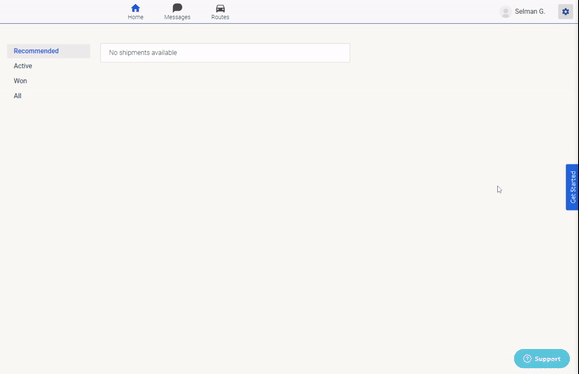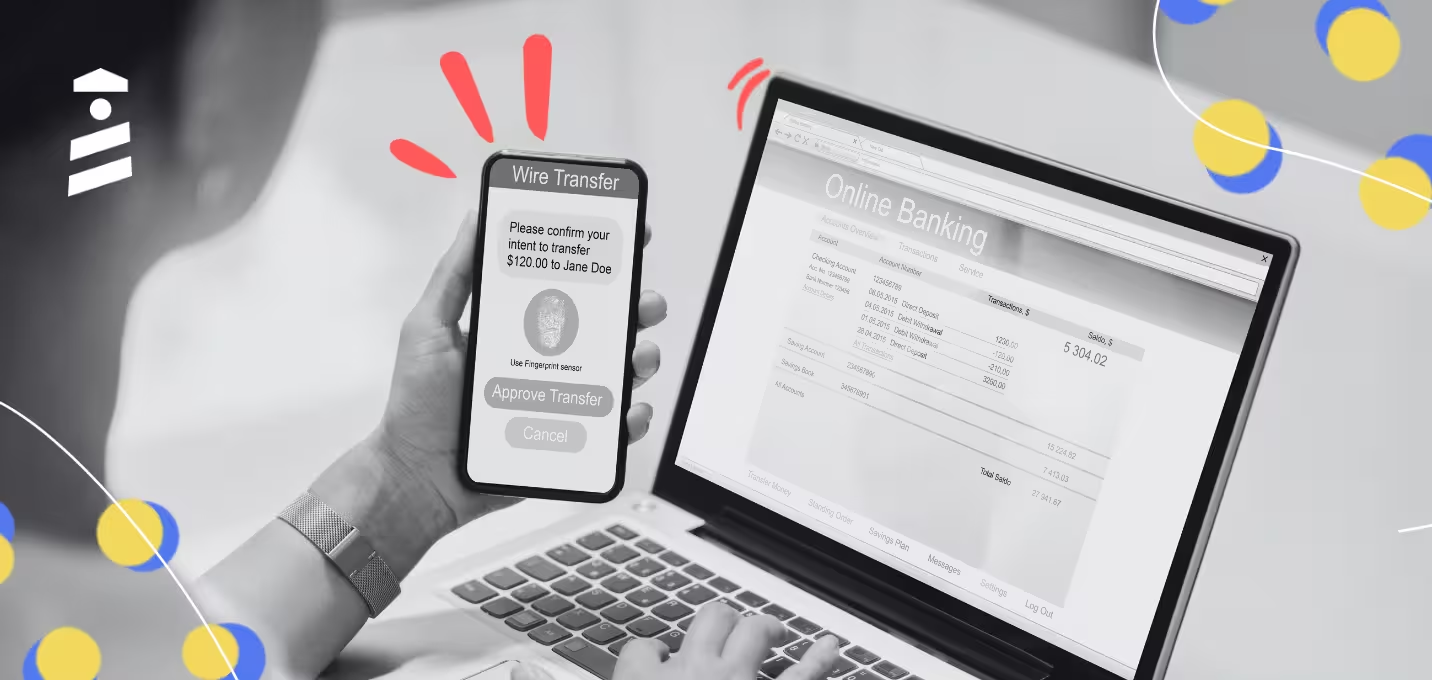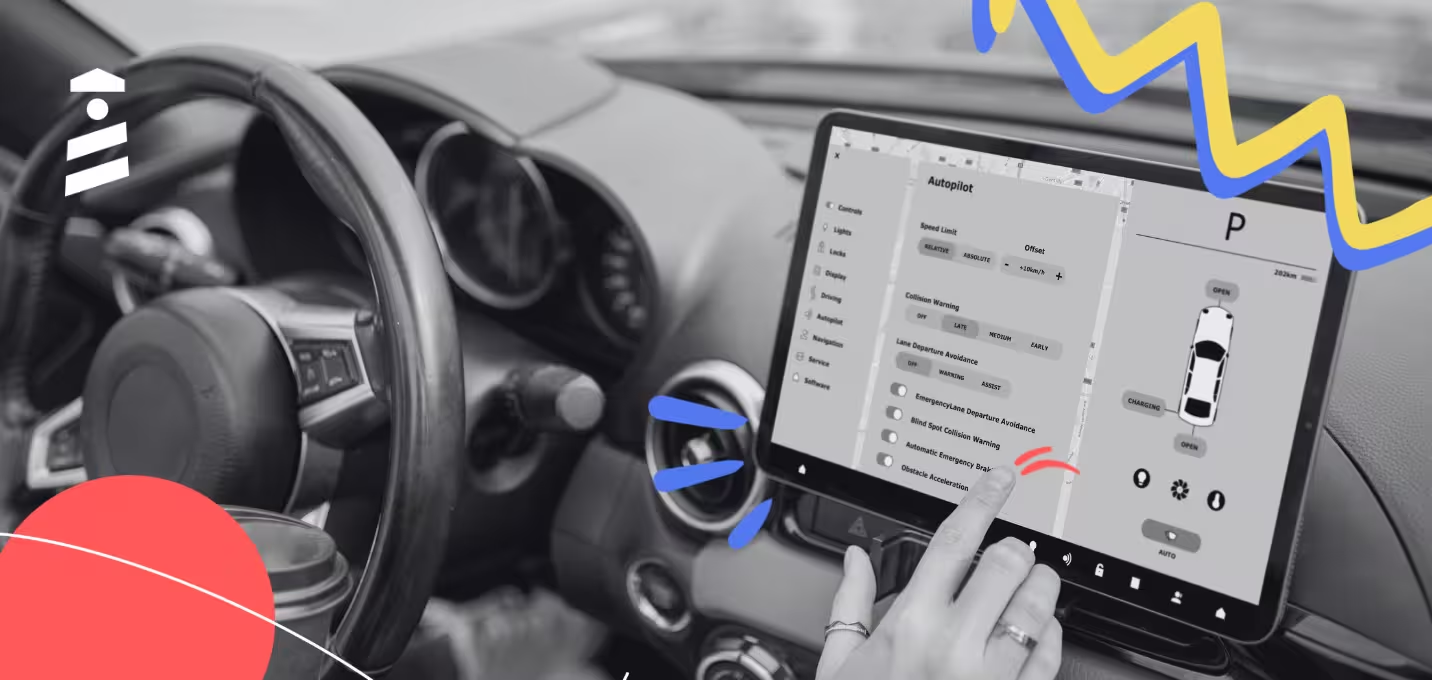

When businesses hear the word "conversion rate," most of them immediately think of "revenue," "sales," and "customer acquisition."
Right?

But to get to that point, all companies must go through "payback point," "lost deals," and "primary customer acquisition cost."
Shortly, every company knows the importance of having a high conversion rate, but very few are prepared to take on the actual challenges.
But;
The most converting companies save at least 5% of their budget for conversion rate optimization purposes. This means that a company that has a $100M ARR spends $5M each year to optimize their conversion rate.
And I am here to help you learn how to get to that point without friction.
In this guide, I will be talking about:
- What SaaS Conversion is,
- How it is different from other industries such as eCommerce,
- What the different conversions in SaaS are,
- How to calculate your conversion rate in SaaS,
- SaaS conversion rate benchmarks,
- And 6 (plus 20) tips to improve SaaS conversions.
This is going to be a long read, but it is going to be worth it.
So get yourself a cup of tea/coffee, open a background music if you like, and let's get into it:
What Is a SaaS Conversion?
The Conversion Rate is the ratio of converted visitors to total visitors. In other words, it helps you calculate the percentage of potential customers you managed to turn into actual customers. For SaaS, a "converted customer" is usually someone who started paying for the product, but this parameter could change for other businesses.
I will be talking about the types of conversions right after.
Before that, let's take a look at how SaaS conversion is different:
SaaS conversions are different from eCommerce and other industries
As I mentioned above, the definition of "conversion rate" depends on what you mean.
For eCommerce, it usually means people who make a purchase instead of just leaving the website. Sometimes it could mean the number of memberships sold or the number of credit card info collected.
And eCommerce conversion rates are around only 3%, which is definitely not the case for SaaS.
In SaaS, there are many more types of Conversion:
- Visitor to trial periods,
- Trial to qualified lead,
- Trial to paying customer,
- Freemium to paying customer.
There are different benchmarks and best practices for each. If your goal is to maximize the percentage of trial users, you should focus on marketing efforts. On the other hand, if you need to increase the trial conversion rate, you should definitely invest in user experience and customer success.
Also, did you know that Conversion Rate Optimization is an industry of its own?
SaaS Conversion Optimization is a title of its own
Marketing and sales agencies have been around for a long while, but with the accelerating popularization of web services, there have been many new businesses that promise to solve one specific problem that you face.
SEO and CRO are two of the most recurring ones.
Companies such as VWO and Neil Patel digital specialize in SaaS CRO, and others such as Trinity and Invesp help you convert more people into customers for eCommerce.
💸 Conversion rate optimization specialist salaries range between $57,500 - $98-500. However, depending on your portfolio and experience, the hourly rate of being a CRO specialist goes up to $199.
As you can tell, the future of the industry is bright.
Being a CRO specialist is not easy, though. Keeping industry benchmarks for each business model in mind while applying the correct strategy and getting people into a conversion funnel is a job that takes lots of courage.
But starting with CRO is relatively easier. Creating a base where you can find what works best for you is not that difficult. But first, you need to know which conversion type you lack the most.
Different Conversions in SaaS
By now, you already know that "converting s customer" is more than getting them to pay.
Especially for SaaS, there are multiple types of conversions and many different benchmarks for each type, as you can see in the graph below.

For now, I will explain the key differences and challenges of each conversion type, but I will be saving the calculations for the next heading to avoid confusion.
Are you ready to dig into it?
1- Visitor to Free Trial/Freemium Conversions
The first step of gathering leads is usually getting people to know about your product, and deciding to give it a shot.
But most people won't even consider your product as an option if you don't let them try the product for free. They will simply go with a competitor of yours that allows them to experiment with it.
Therefore, visitor to free trial/freemium conversions are the most difficult and most unstable of all others.
Let me briefly explain what those two are:
- Free Trial: Offering a part of the whole of your product for a limited amount of time.
- Freemium: Offering a simple version of your product without a time limit.
For instance, Google workspace has a freemium business model where you can use up to 15GB of storage space for free, and should make a purchase to use further storage space and benefits. UserGuiding, on the other hand, offers a 14-Day Free Trial for users to see if the product is a good fit for them.


Getting people to try your product is the most difficult part, and the least expectation is on this type because thousands of people are free to visit your website, but few of them are actually interested in your solution.
And, the hassle doesn't end when you get them to sign up. Then you should focus on:
2- Free Trial/Freemium to PQL Conversion
PQL stands for Product Qualified Lead. It is the number of leads that have experienced your product and are most likely to make a purchase.
Usually, 36% of free trial/freemium users are thought to be PQLs, but this depends on how much they liked your product and whether you were able to prove your worth.
In order to convert a trial/freemium user to a PQL, you should focus on:
- Making it easy to sign up,
- Providing exceptional onboarding,
- Having a user-friendly UX,
- Being accessible and ready to offer support any second.
If you feel like you need more in-depth knowledge about PQL conversions, here is a great eBook by Victor Eduoh about PQLs and how to boost PQL acquisition.
Let us focus on our next type:
3- Free Trial to Paid Conversions
Free Trial conversion rate refers to the percentage of users who start using your product with a free trial and then turn into long-term paying customers.
In every parallel universe where two plus two equals four, free trial works better for B2B.
That is because the CAC is high for B2B SaaS, and freemium doesn't help compensate for the costs.
So, you are very likely to be looking for a solution to increase this type of conversion.
A high free trial conversion rate suggests that you are good at conveying the benefits of your product to users. It means that your customers don't have any problem understanding your worth, and trusting you with their investment.
On the other hand, a low free trial conversion rate suggests that either you have to work on the quality of your product or the guidance in helping users make use of that quality.
Here you can find the easiest 5 ways to increase free trial conversion rate.
4- Freemium to Paid Conversions
Getting people to pay in a freemium model is difficult.
It depends mostly on your upselling skills, and your freemium strategy.
Here is the #1 guide to improving freemium conversion rate.
Here is a fact that most freemium model companies forget:
☞ Even if your conversion rate isn't as high as you desire at the beginning, you can benefit from this model vastly. For instance, by providing exceptional service, you can gather more freemium users to build social proof for your product.
The people who pay for your product will build revenue, while the people who don't will build good reviews and free word-of-mouth marketing. In the long run, you could have the upper hand on the market, even if other competitors provide better services - because you are the one that people talk about.
Why does this remind me of HubSpot...
How to Calculate Conversions in SaaS
Overall, the idea is simple. You divide the number of converted users by the number of the targeted group.
As for the details;
Visitor conversions:
The formula for visitor to trial/freemium conversions is:
The number of people that signed up / The total number of visitors x 100
PQL conversions:
To calculate trial/freemium to PQL conversions, you should first identify which users qualify as PQL.
This guide about PQL identification and conversion will be a great help while doing that.
Then, you can use this formula:
Number of trial/freemium users that qualify as PQL / Total Trial/freemium users x 100
Free Trial Conversions:
Here is the formula:
Free Trial conversion rate = Free trials that are converted in a specific period of time / the number of trial users in that specific period of time x 100
Freemium Conversions:
Calculating the freemium conversion rate is simple:
You divide the number of total freemium users by the number of users that converted into active subscribers over a specific period.
SaaS Conversion Rate Benchmarks
Did you know that for every $92 spent on user acquisition, businesses spend only 1$ on CRO?
I will be including the most general statistics and benchmarks under this heading. If you feel like you want to know the in-depth statistics about Conversion Rates and CRO, here is a list of the most important 50 statistics and trends about it.

Let's begin:
What is the average conversion rate for SaaS?
✅ The Free Trial conversion rate depends on whether you ask for credit card information to start the free trial or not.
👉 If you do, the average conversion rate should be between 30-60%. But this number can be misleading since there could be users that churn quickly because they forgot to opt-out from the opt-out trial. In this case, you should keep an eye on churn rates and daily/monthly active users.
👉 If you don't, then you should know that the industry average ranges between 2-15%. Only a few companies, such as Recapture.io, see opt-in trial conversion rates as high as 25%.
✅ Ideally, freemium conversion rates are between 2-5% for B2B SaaS. But typically, the freemium conversion rate is around 1%. Still, don't be surprised to hear that some companies (such as Slack) have a freemium conversion rate above 30%.
What is a good SaaS conversion rate?
Overall, if your visitor conversion rate is between 3-7%, it means that you are on par with the majority of the SaaS market.
Getting to that point and even surpassing it might seem challenging, but it is not.
Here is the proof:
Even increasing the number of your landing pages from 10 to 15 allows you to increase leads by 55%. Even so, 62% of B2B companies have less than 6 landing pages.
Would you like to know what else helps you increase your customer base?
Here you go:
6 (plus 20) Quick Tips to Improve SaaS Conversions
Here is what I'm going to do:
I will include only the most crucial six tips and conversion rate metrics that you absolutely have to follow.
Then, I will leave a link to an extensive "tips and trics for increasing conversion benchmarks and rates" list that includes 20 proven easy methods.
Deal?
Here we go:
1- Re-evaluate your product-market fit
Don't worry, you don't have to go through the whole process of finding the correct market and a perfect fit again.
This time, you just have to make sure that you were able to reach your target market.
You should re-evaluate your product-market fit in order to identify if you need to focus on conversion rate optimization more than you do.
Ask yourself these questions:
🤔 How many signups do you get each week? How does this number compare to your website views and search apparences?
🤔 How many users have interacted with your most important feature?
🤔 What is the average customer lifetime?
🤔 How much is your customer acquisition cost?
🤔 How many of the converted users use the product daily?
If the answer to more than 2 of these questions don't satisfy you, you should take immediate action.
The last two questions will also help you find out something else:
2- Keep an eye on CAC and DAU to identify unqualified conversions
Let's say that your visitor->trial conversions are doing great, but you have a problem with trial->paid conversions.
This means that you get a lot of unqualified conversions and leads that won't really help you grow.
There are two easy ways to pinpoint unqualified leads:
- If your CAC is too high, it means that not many people convert into paying customers even though you spend a lot on acquisition. To avoid this, try to either reduce the amount of paid marketing channels, or change your marketing strategy to find a better fit in the correct market.
- If your DAU (or MAU) count is too low, it means that you weren't able to make a good first impression, and you should really work on your onboarding and UX.
This brings us to our next point:
3- Be easily reachable
Let me repeat: if your activation rate is low, there is something in the user journey that bothered them and made them forget you.
Reducing this friction is not only important to increase your conversion rate, but also to reduce churn and acquisition costs.
Here are five elements that will help you paint a better picture in you customers' eyes:
- The Sign-up form should be short and simple. You shouldn't ask for more than 4 boxes of information. If you actually need more information, you should create a second page, and reduce the amount of boxes shown at once.
- The onboarding is a crucial process that many companies somehow don't even realize. If your user doesn't understand how to use the product as soon as they sign up, they won't ever try again. Therefore, your onboarding process should be smooth, simple direct to the point, and easily reachable.
- You should use checklists on your interface to remind users of the steps that they should take to fully benefit from your product. This checklist shouldn't be too long, no longer than 5-6 checkboxes. Also, allowing the user to monitor their progress with a checklist will make them more eager to come back and stick around.
- You should provide constant help. There are many ways to offer help to all customers, such as offering a help page, integrating an on-screen resource center, or a live chat feature for them to ask specific questions.
- Having said live-chat, you should consider building bots for instant reply in the live chat section. To do that, you should gather the most frequently asked questions, create an answer which could include a guide or a video, and code the bots to provide the correct answer to each question.
Here is a great example of how to be easily reachable by CitizenShipper:


4- Offer a personalized experience
First things first: personalization isn't difficult.
In order to provide a personalized experience, you don't have to know each of your customers. You just have to make educated guesses that are based on user persona analysis.
Take TikTok as an example:

In order to provide a personalized experience that fits perfectly, they ask a simple question and show you results according to your answer.
👉 Providing personalization options is not only easy, but also helps you increase engagement rates.
And a high engagement from the beginning means more trial->paying conversions.
Another way to interpret "personalization" is building your marketing strategy around very specific targets, such as using Google Search Ads for specific searches.
For instance, if you search for a CRO tool on Google, here is what comes up first:

This way, you will target the very people who are looking for you without knowing.
And then, there will be only one thing left to do:
5- Take advantage of the empty states
Empty states are either your enemy or your best friend, depending on how you use them.
In your case, you should definitely make them engaging. Or else, the potential customer will be bored even before they try to figure out your tool, and lower your conversion rate.
Let's see how you feel after reading Webflow's empty state message:

Personally, I feel entertained and now I really want to press that blue button to make something happen. And I know that as soon as I do press that button, I will understand better what I'm supposed to do next.
It looks way much better than an empty white screen. I don't like not knowing what to do when I first start using something.
6- Don't forget the details while focusing on the big picture
No matter how small a step is, it will take you forward. What you need is a collection of small steps to improve your conversion rates.
Actually, I told you that I can help you with 20 of those unbelievably small steps.
So here you go with a great guide about the easiest methods to maximize and optimize SaaS conversion.
Conclusion
SaaS is all about taking the right steps in the right order at the right time.
Wow. I should tweet that.
Determining the reasons and increasing conversion rates requires those steps as well, no matter how big, no matter how frequent.
But to get somewhere with your product and start making a profit, you should know how to optimize user conversion.
Simply:
- Know your market and your potential customers,
- Scale and expand according to their needs,
- Give them what you want,
- Help them find you,
- Help them understand your product,
- Keep them entertained.
That's all I can say, and that is all you can do.
Frequently Asked Questions
Is a 5% conversion rate good?
A 5% conversion rate is considered not bad for early-stage SaaS companies and startups. The median conversion rate is 7% for more established companies.
How do I increase my conversion rate SaaS?
To increase SaaS conversion, you should follow these steps: create a successful marketing strategy, get people to sign up and collect qualified leads, provide an amazing user experience and drive them into the last steps of your sales cycle.

















.svg)
.svg)
.svg)
.svg)
.svg)

.svg)
.svg)












.svg)
.svg)




.png)

















